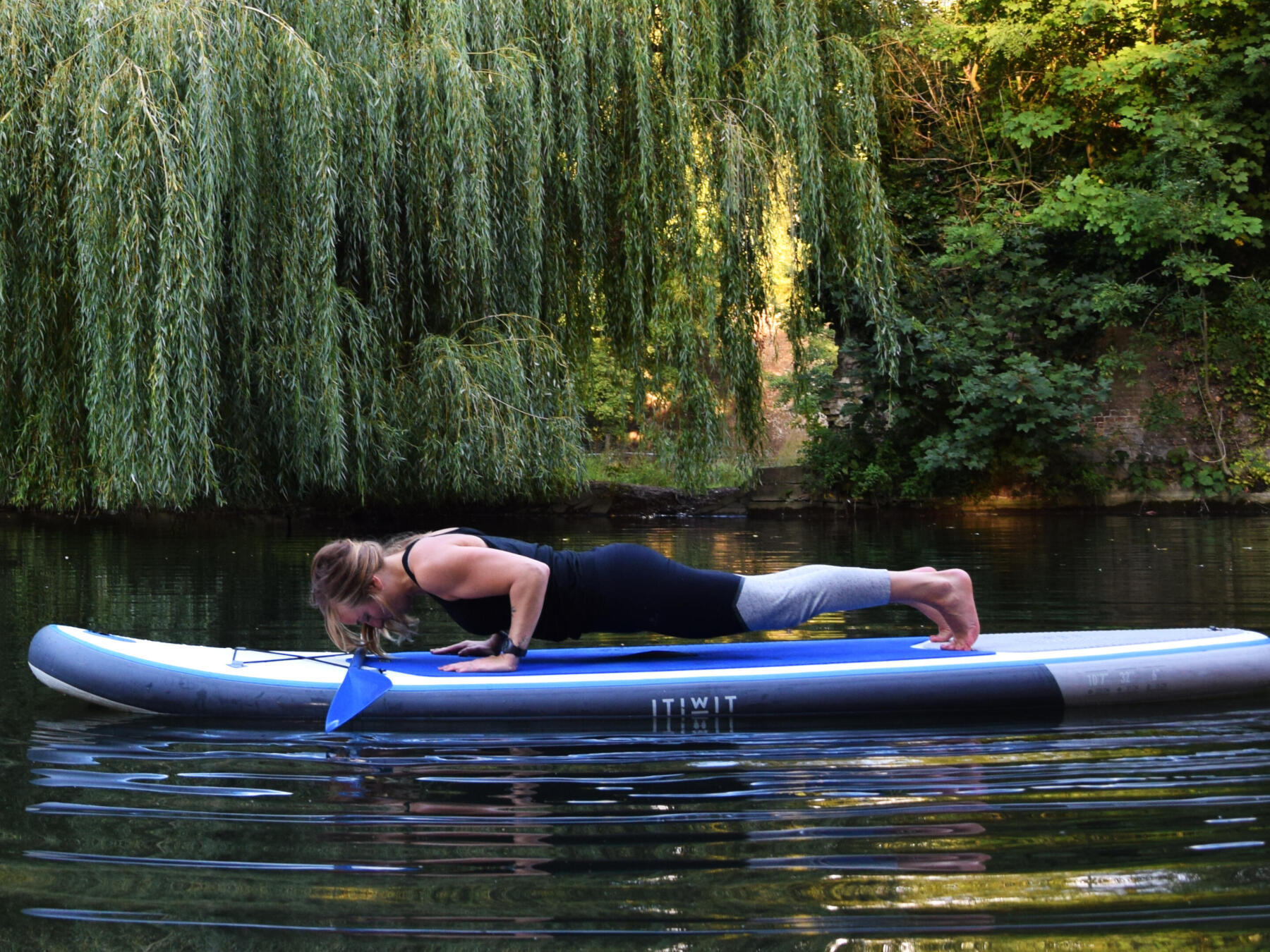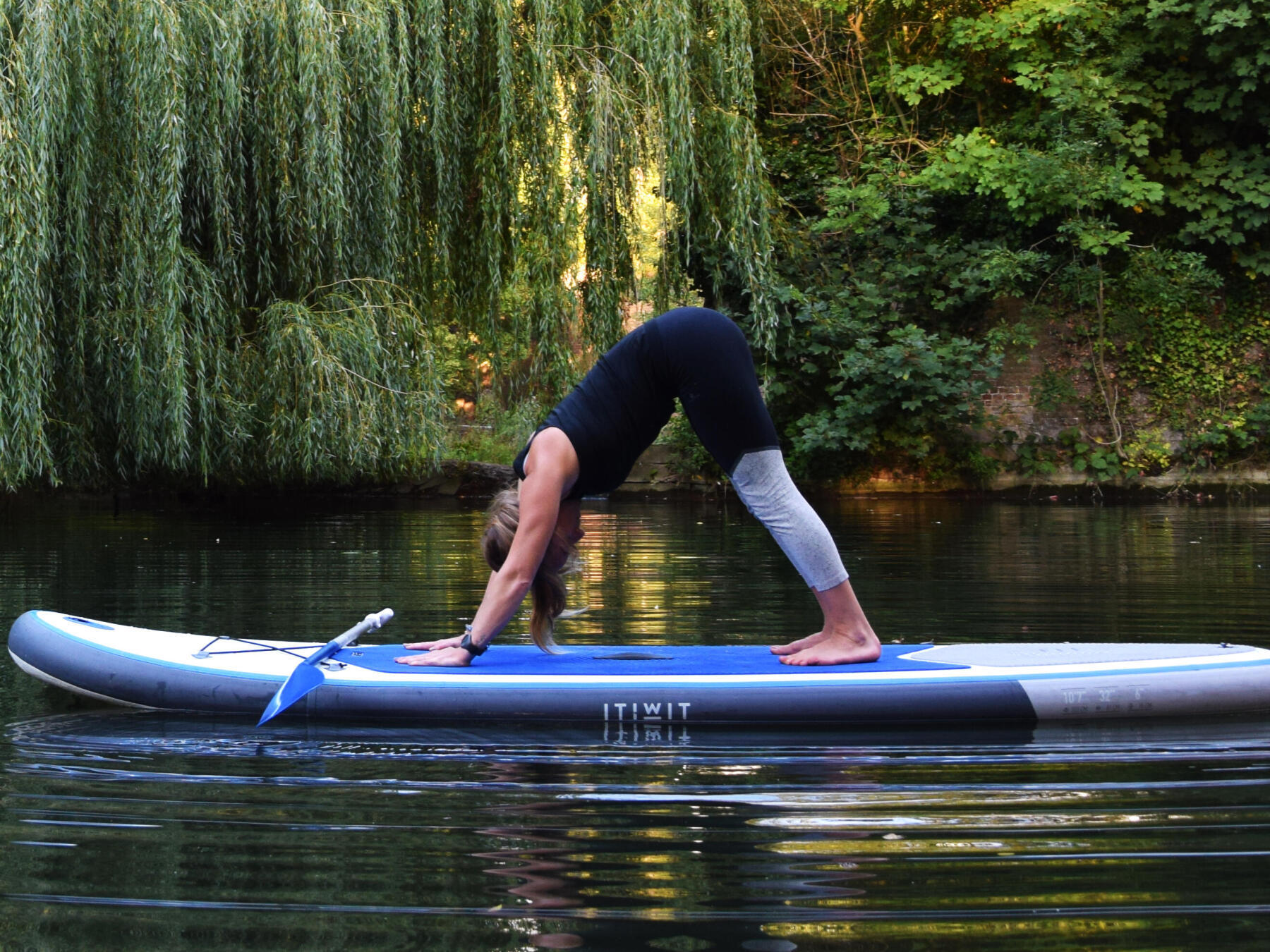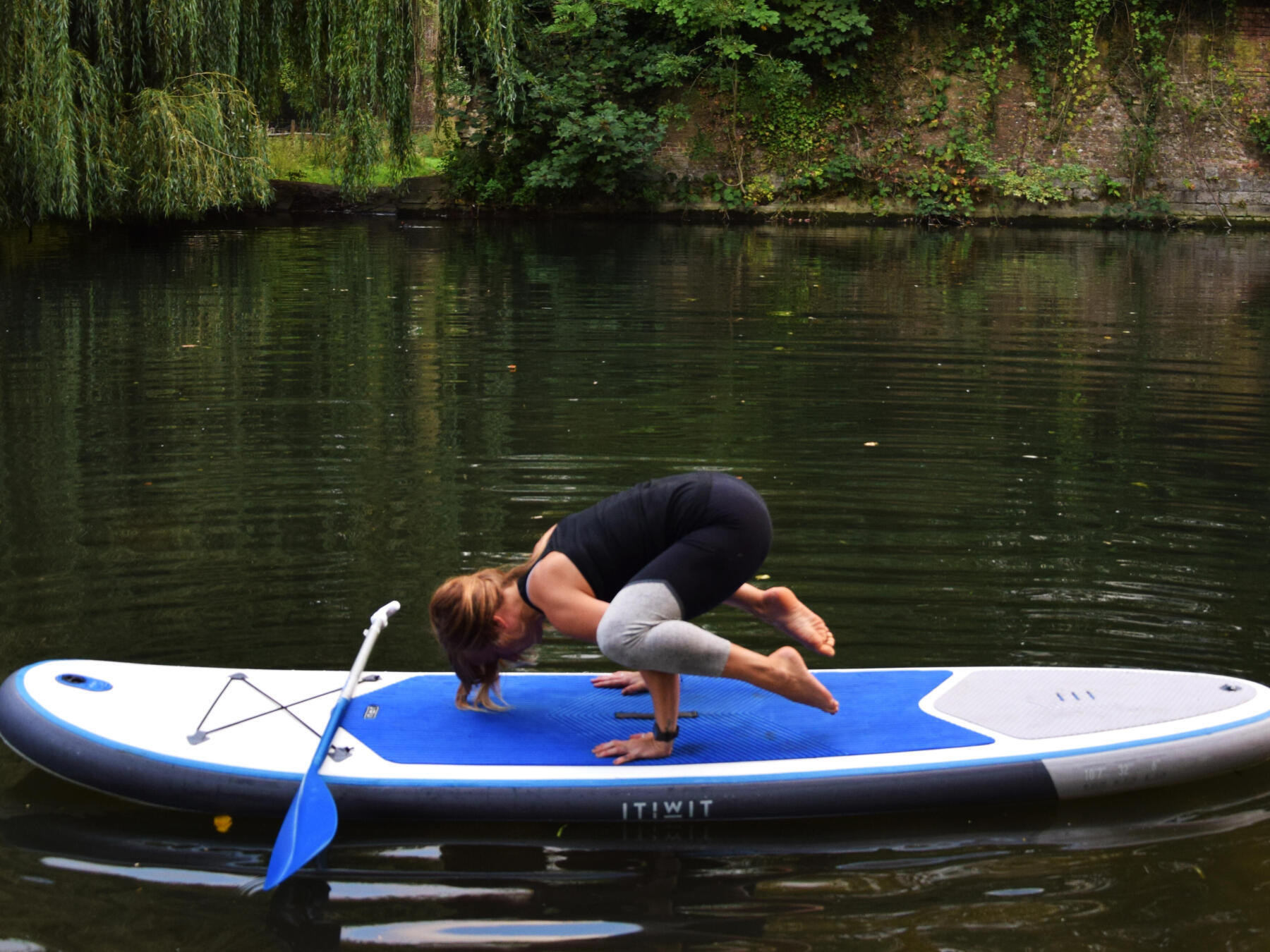In yoga, you perform asanas (physical poses). on a sup, the benefits are greater due to the extra effort required to hold a pose on a moving object.
the practice of "yin yoga" asanas requires less muscular exertion. they focus on stillness, breathing and concentration to increase your flexibility, relax the nervous system and even improve your performance in sports. what's great about sup yoga is that it gets you out of the house, studio or gym to practise in harmony with nature to achieve ever greater well-being.
Here are my recommended poses for you to try on a flat and calm body of water—you will love it!
























